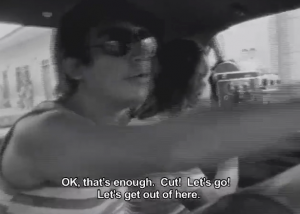Phil Collins at Tanya Bonakdar Gallery
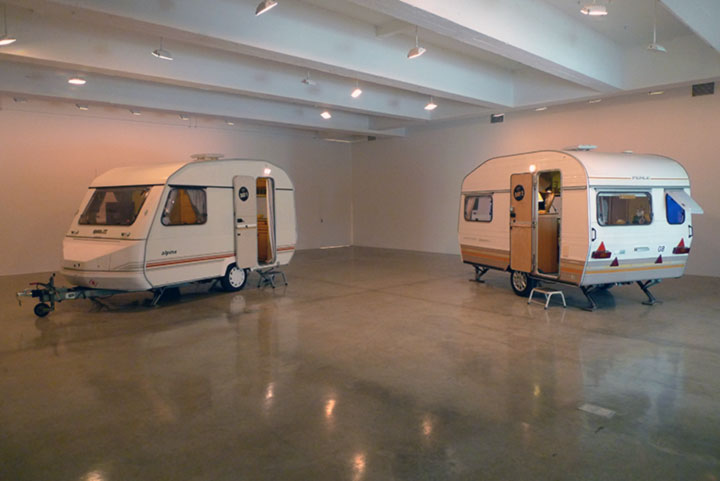
Phil Collins puts together a good show! There’s not much to not enjoy in Phil Collins current exhibition at Tanya Bonakdar Gallery. Walking into a gallery with two home trailers is always going to be visually engaging. And when you step into the trailers, there are salty potato chips and refreshments waiting for you, so that you may have a seat and enjoy programming from a television channel created by the artists – TUTBU.TV (I wish it actually existed online). Although I did not have the patience to watch the programming for very long, what I did see were entertaining vignettes that appeared to mock the usual television programming available and included a soft porn featuring what appeared to be 18th Century European aristocracy.
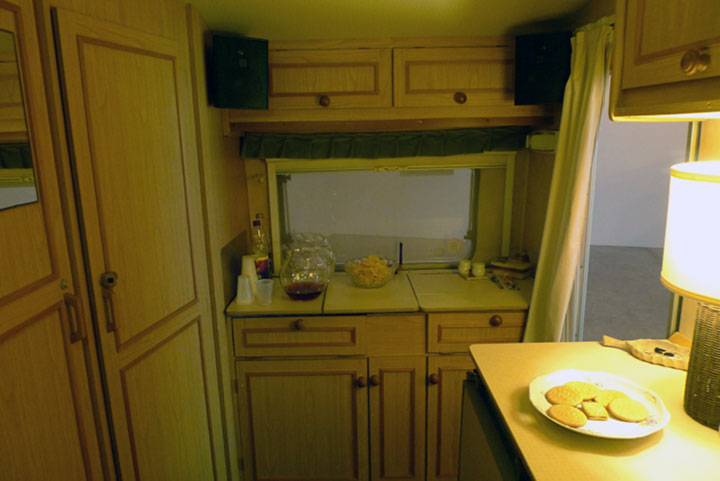

Upstairs are two more projects, a series of private listening rooms that present a record player and shelves with 7″ records. I only listened to one, but the song is beautiful and the quality of sound inside the listening room is quite amazing. Below is a description of these audio listening rooms:
Within the upstairs main gallery, six specially designed listening booths house Collins’ most recent work, my heart’s in my hand, and my hand is pierced, and my hand’s in the bag, and the bag is shut, and my heart is caught, a project conceived in collaboration with guests of a survival station for the homeless in Cologne. There, Collins installed a phone booth with a free line that anyone could use for unlimited local and international calls on the agreement that the conversations would be recorded and then anonymized. The selected material was posted to a group of musicians, including David Sylvian, Scritti Politti, Lætitia Sadier, Maria Minerva and Damon & Naomi, among others, who used these recordings as source material to produce original songs presented here inside the booths as 7” vinyl records.
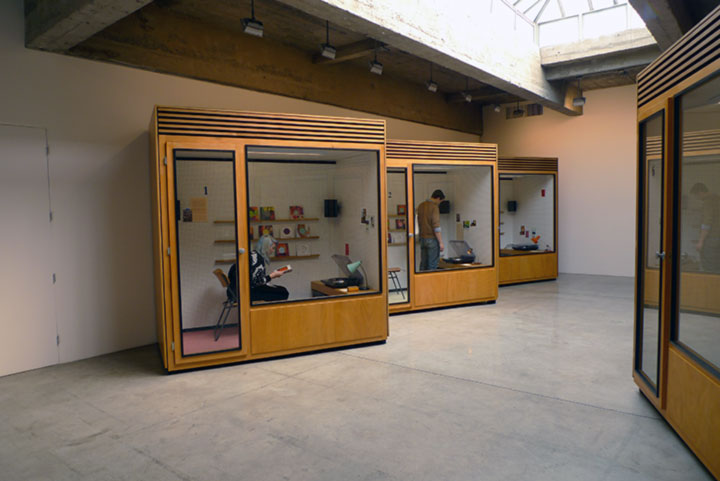
And perhaps my favorite piece is the video “Subculture: The Meaning of Style” although it fell short of initial expectation formed upon walking in due to the lack of narrative. When I first walked in, projected onto the wall were two young Asian men with shaved heads dressing against a backdrop of Buddhist wall paper. The clothes that the men are wearing are easily identified as skin-head clothing, but their faces look like young buddhist monks. I loved the juxtaposition and it appeared as if they were preparing to go somewhere and a narrative would ensue that would complicate the superimposition of popular British construct onto a non-Western community. Unfortunately, what followed was brief and no more than a series of gatherings of these skin-head Malaysians hanging out, entirely visual. Although one is left wondering who they are, why they choose this fashion style, do they understand its roots, how was it popularized in Malaysia… It’s great to have a piece generate these questions, but the work left me wanting more and feeling like it’s a bit empty and too easy… Perhaps that’s point.
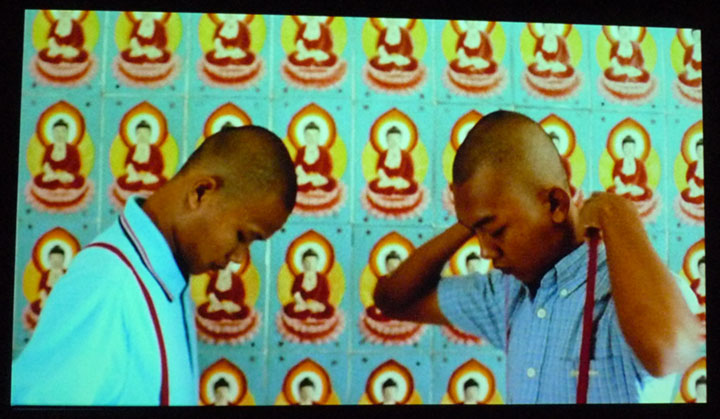
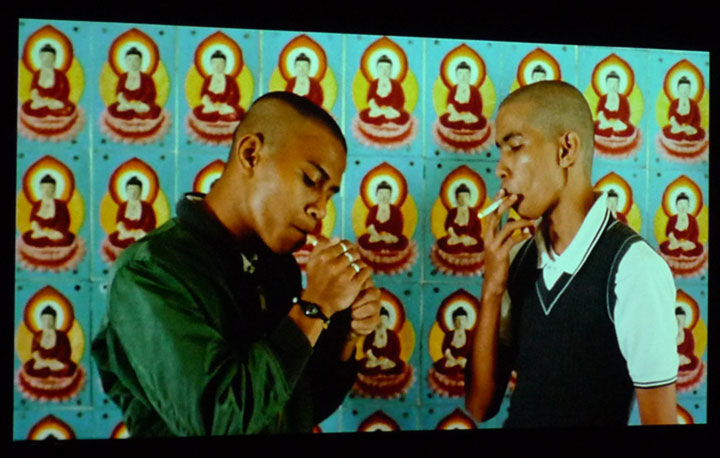
Valerie Hagerty at Brooklyn Museum
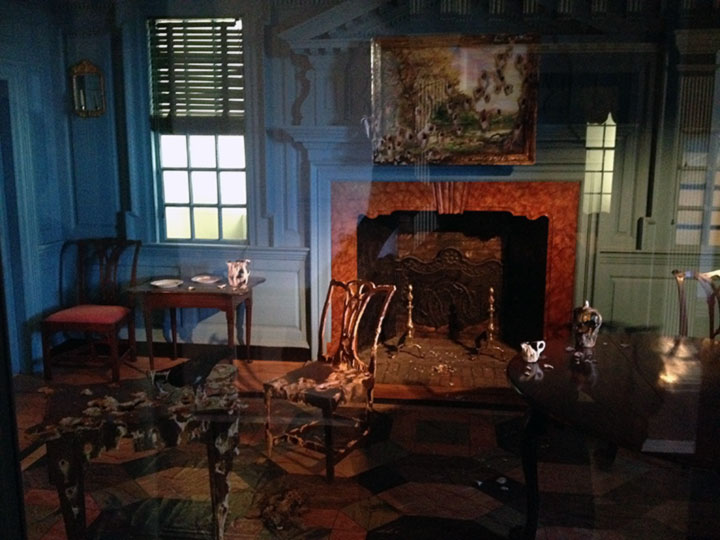
Today, I attended Suzanne Lacy’s discussion regarding “Between the Door and the Street” which was interesting and would require its own post. Following the discussion, I went for a quick stroll through the museum and discovered Valerie Hegarty’s “Alternative Histories” – three installations in the period rooms. The Brooklyn Museum’s period rooms have always struck me as precious, spaces that remain intact for the visiting tourist to enjoy, so it was a real surprise to see that the museum would allow a contemporary artist to intervene upon these rooms. It’s particularly surprising as the installations are critical of the history portrayed in the period rooms. Valerie Hegarty tears away at the pristine nature of these rooms that reflect early U.S. Puritanism and a humble nobility, by presenting rooms that are in decay, crows or woodpeckers have entered the rooms and tear away at the objects. The rooms effectively bring to question the heroism of early U.S. history and remind us of the horror that early settlers brought to Native Americans and the natural landscape.
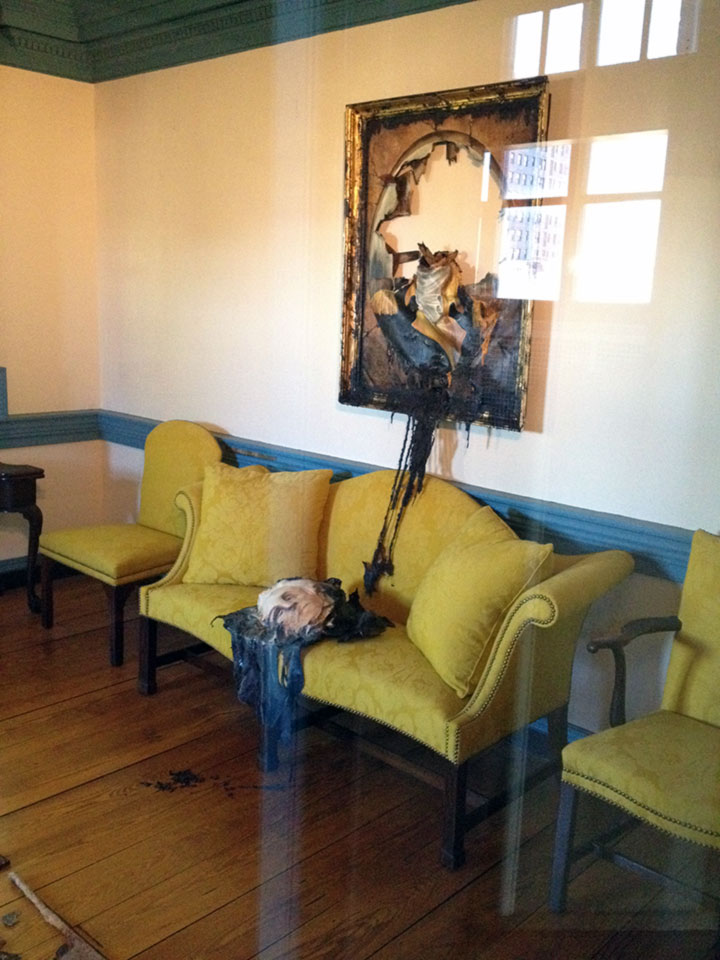
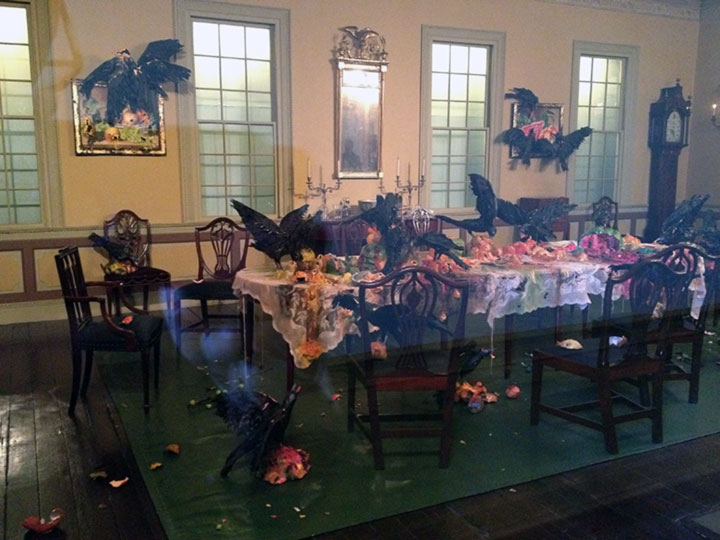
Agarrando Pueblo (aka The Vampires of Poverty)
I recently re-visited this very important mockumentary from 1978 and need to make a note of it. “Agarrando Pueblo (aka The Vampires of Poverty)” was shot in Cali, Colombia, 1978 and is a satiric mockumentary critiquing the popularity of documentaries capturing Latin American poverty in the 1970s. Mayolo and Ospina coined the term “pornomiseria” or “pornography of misery” in reference to the objectification of poverty in Latin America for Eurocentric audiences.
The director and cameraman move quickly around the city requesting a taxi driver to take them to spots where they can capture poor children, crazy people and whores. The directors have a recipe of necessary vignettes to compose the documentary. When pedestrians confront the film makers they dismissively tell them that it’s to inform the world or that they don’t understand what this film is about. At one point the director is filmed some cocaine in his hotel bathroom between shots.
Turntable Garden and Cafe, Helsinki
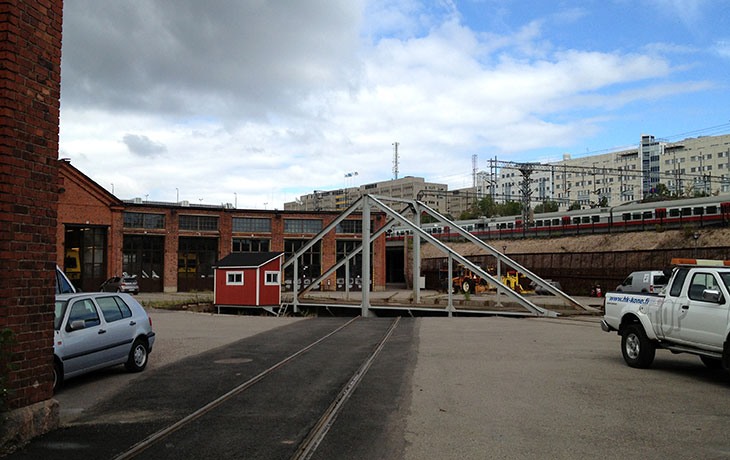
An unused railway turntable
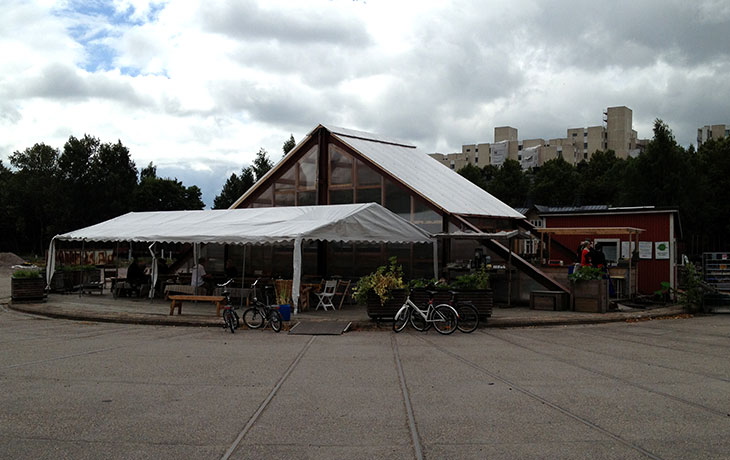
The transformed railway turntable, now a garden and cafe
In August, Brooke and I had lunch at the Turntable Cafe located in old railroad yards of Helsinki. We were primarily doing research regarding urban composting and gardening. These railroad yards had been abandoned and in 2012, one of the railway turntables was transformed into a greenhouse and rebranded as Turntable, an experiment in urban gardening. During the summer months, every Friday lunch is available at Turntable and the food that is served is made from what is grown at the garden. Turntable is a great example of industrial wasteland being transformed into a productive area by a small group of people. The food was delicious and inexpensive.
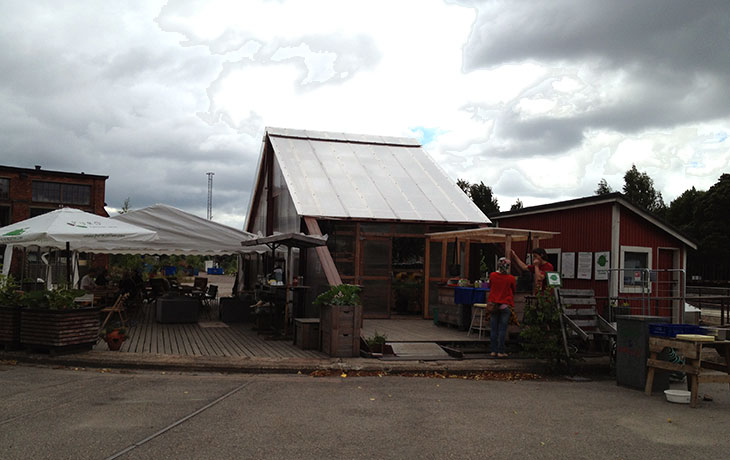
The transformed railway turntable, now a garden and cafe
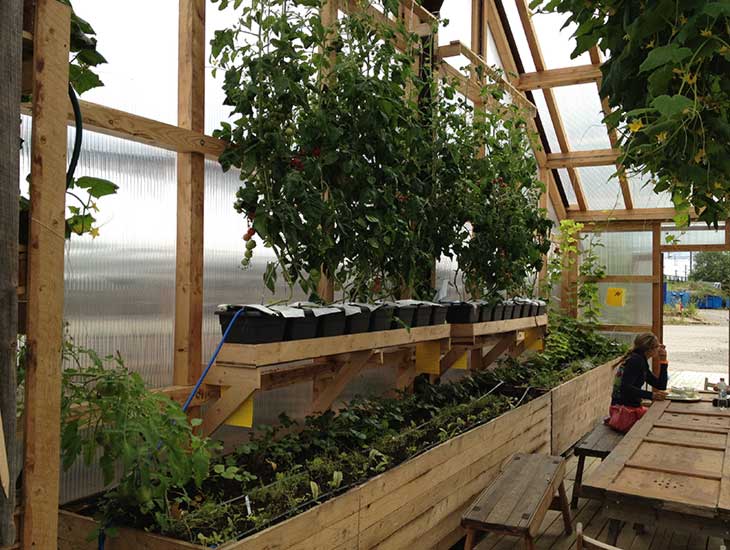
The interior garden
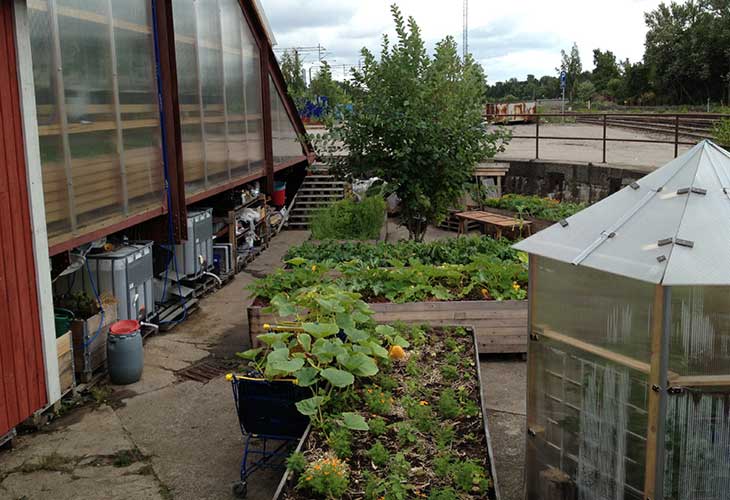
There is water collection below the structure
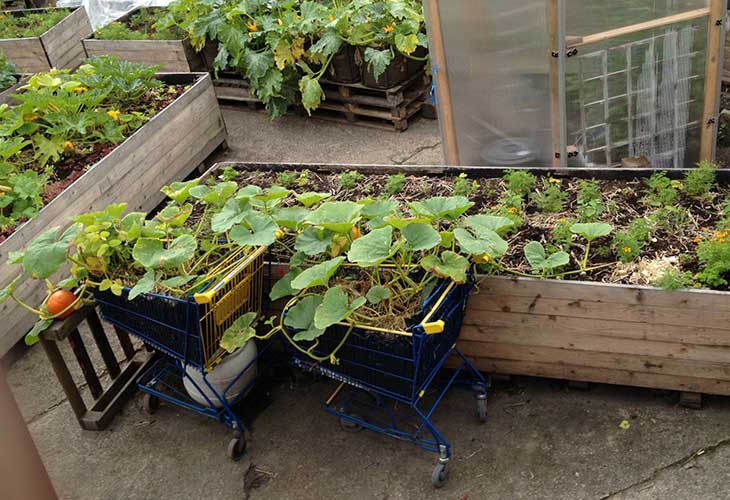
Even shopping carts have been transformed into mobile gardens
The greenhouse built around the turntable i-beams can easily be deconstructed. I found more information regarding Turntable on the portfolio site of Paiva Raivio, one of the artists who collaborated on the transformation of the railway turntable in to the garden and cafe, she states
Turntable is an urban garden, cafe, greenhouse and an open, public space situated in Pasila´s historical railway yard. It was set up by Dodo´s activists: Jaakko Lehtonen, Kirmo Kivelä, Joseph Mulcahy and myself.
The spot is where Dodo´s (an environmental NGO based in Helsinki) urban farming movement begun when gardeners took over a wasteland in 2009. In 2012 we transformed Turntable into an urban farming test lab and source for learning and inspiration. During it´s first year in action Turntable has offered various workshops, events and locally grown food in the Turntable-cafe. The garden also has a beehive, dry toilet, composts, cob oven and solar panels to produce energy.
Go to Paivi Raivio’s page on Kääntöpöytä / Turntable Urban Garden to read more and see photos.
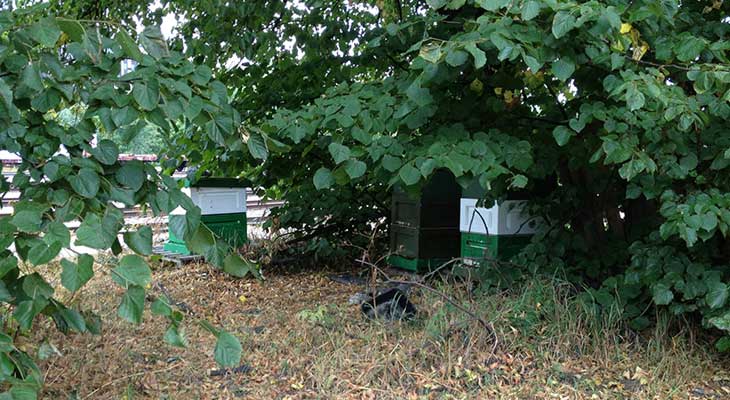
Turntable also has honeybees
BiofiliA – Base for Biological Arts
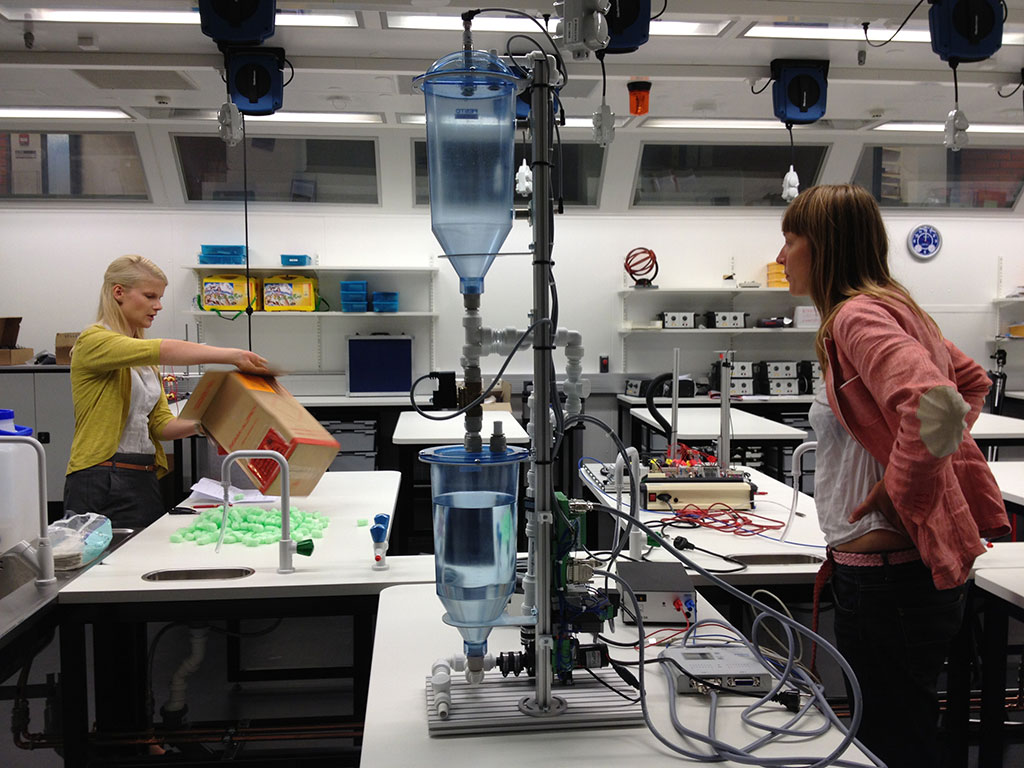
Biofilia manager (left) and Ulla Taipale (right)
Last week, our friend and artist Minna Langstrom introduced Brooke and I to Ulla Taipale who is coordinating BiofiliA – a bio-art lab at Aalto University in Helsinki. Ulla was so generous as to give us a tour of the lab which consists of an electronics area, a wet lab and biology lab. It was amazing to see a university dedicating the funding and facilities to a relatively avant-garde practice of combining biology and art. Pictured above is Ulla to the right and the lab manager a recent bio graduate of the university.
As the BiofiliA site states, the project is “a biological art unit was launched under the Aalto ARTS in 2012. It offers a platform and infrastructure for trans-disciplinary research and education that aim at creating cultural discussion and innovation around the topics related to the manipulation of life and biological processes at a practical and theoretical level, including philosophical and ethical dimensions…”
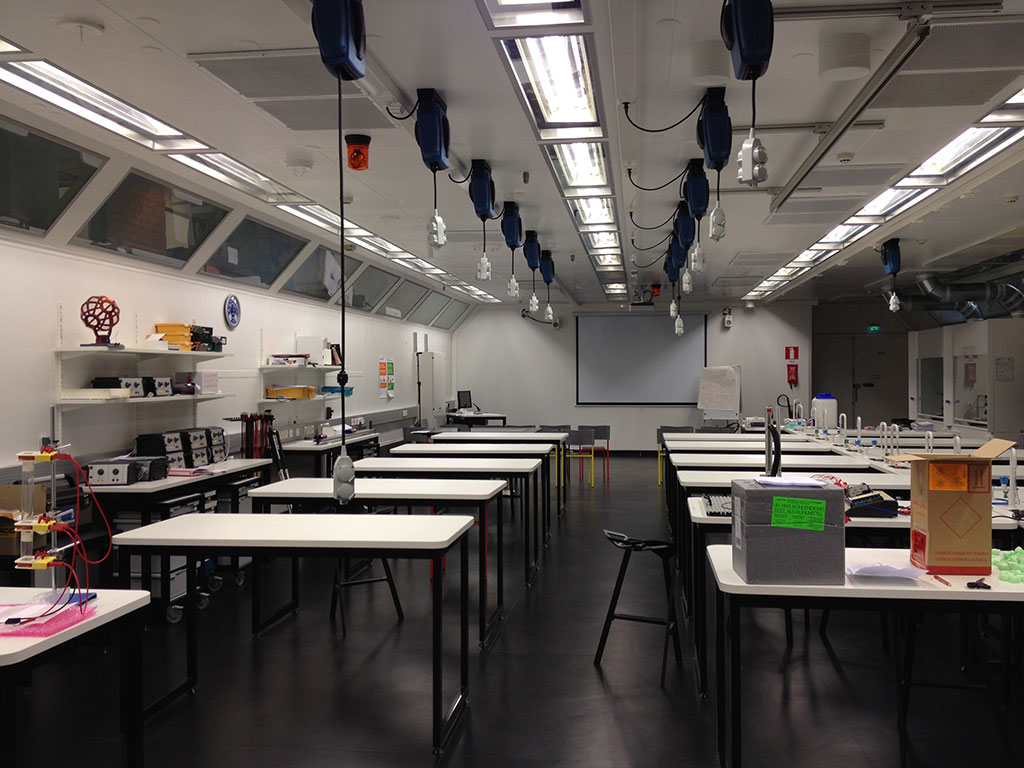
Biofilia lab
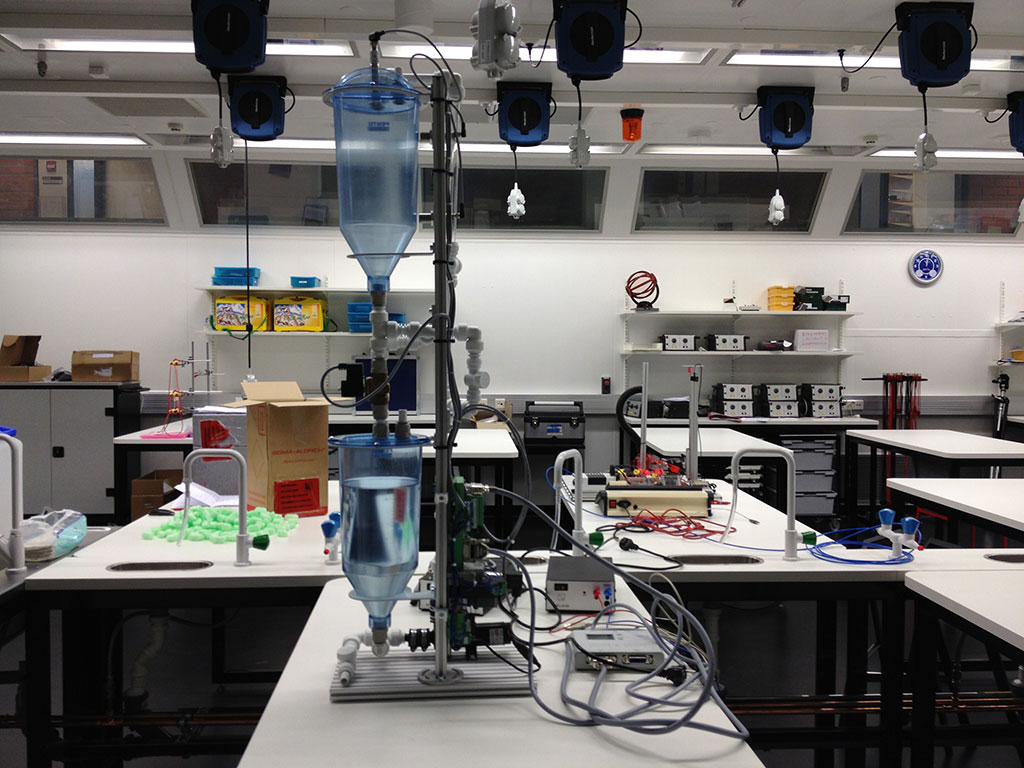
Biofilia lab
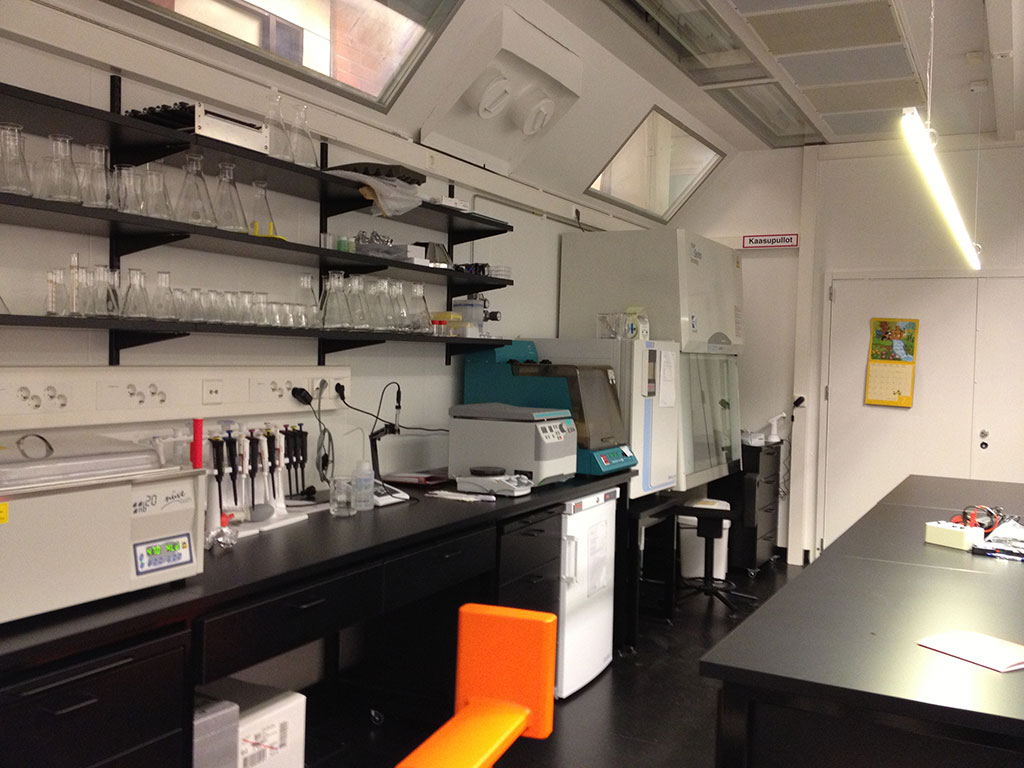
Biofilia lab
Artists that have worked collaboratively with scientists at BiofeliA include Oron Catts of SymbioticA, Christina Stadblauer, Kiran Gangadharan, Agnes Meyer-Brandis and they hope to bring Paul Vanouse for 2014. Art and biology students may take courses at BiofiliA and work along side of resident artists.
One of the ongoing projects exists outside the labs – Hexa-Hive Village an experiment with urban bee keeping. The hives were designed by Christina Stadlbauer and Kiran Gangadharan. And beyond producing honey, Till Bovermann of Media Lab Helsinki has installed contact microphones in one of the hives for “project hive listening.”
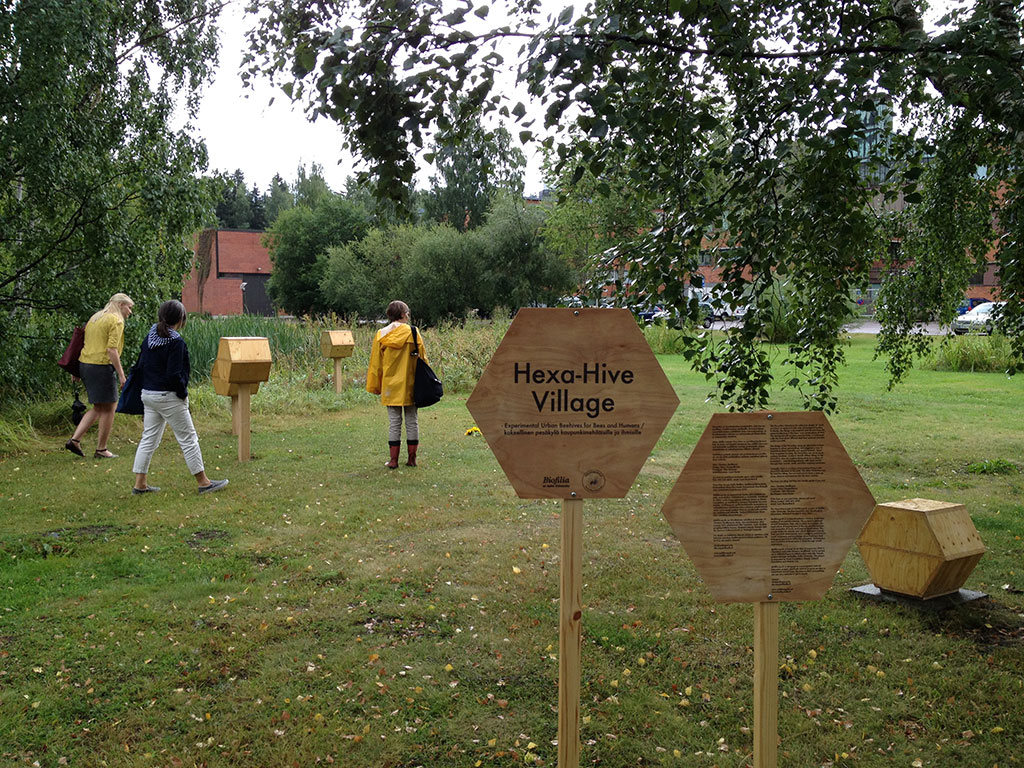
Hexa-Hive Village, a BiofiliA project
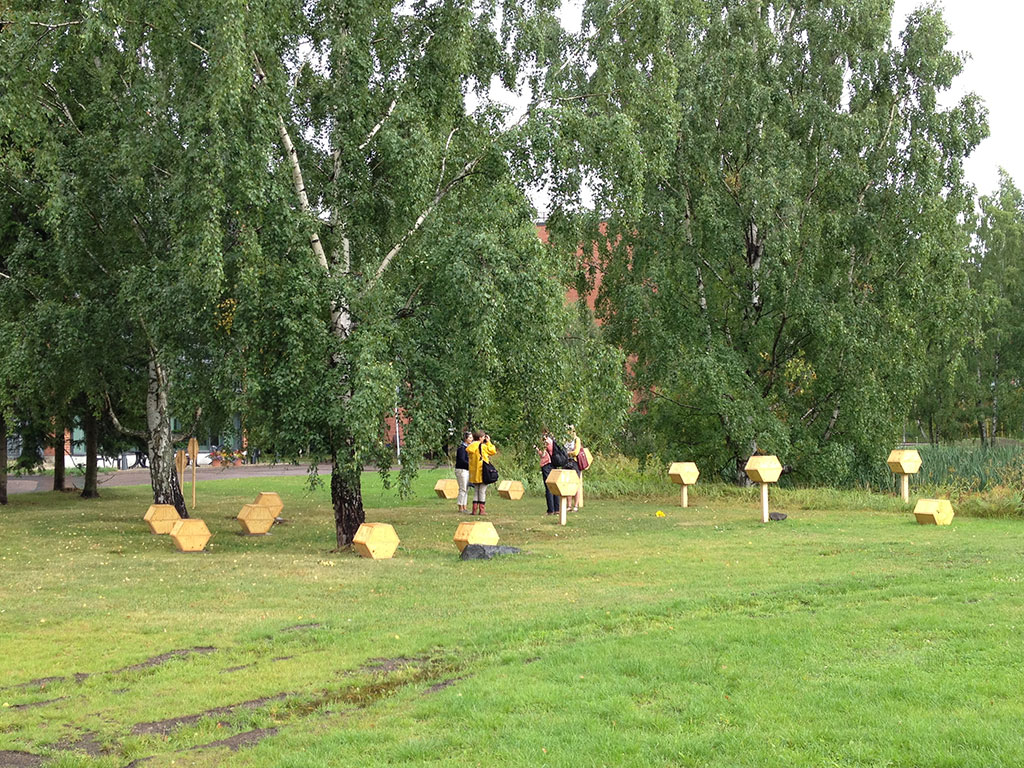
Hexa-Hive Village, a BiofiliA project
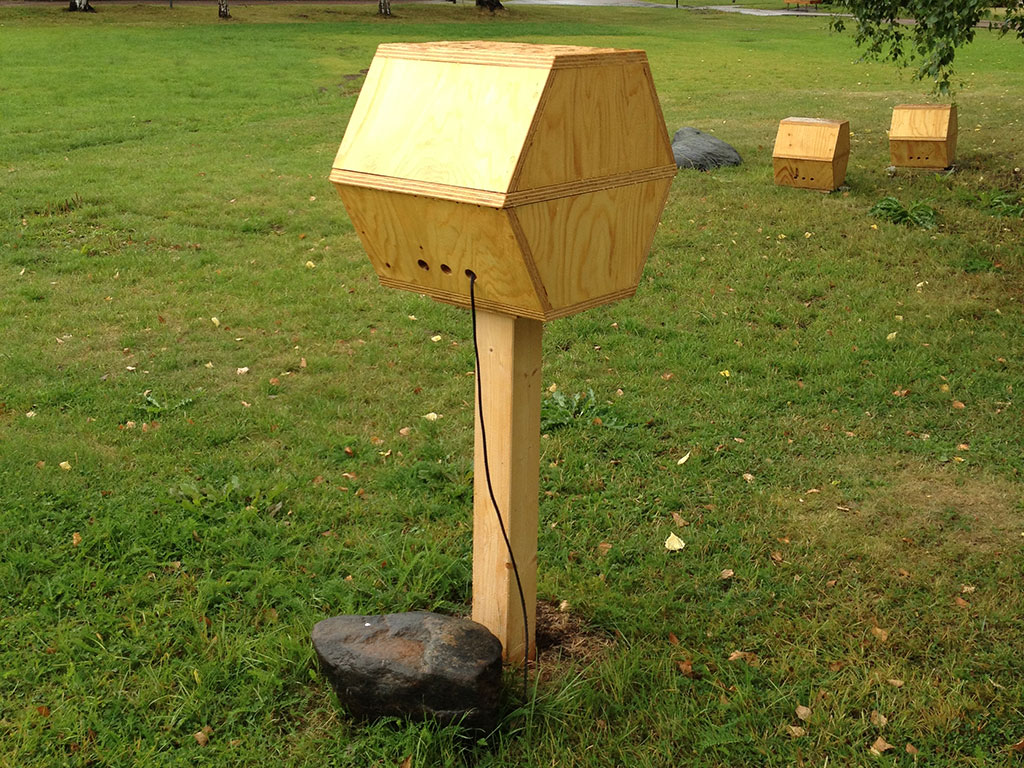
Hexa-Hive Village, a BiofiliA project
“Juan de los muertos” on YouTube
For the last couple days, I’ve been living above FiNNCON2013 at the Cable Factory in Helsinki. I searched through their program and discovered a few interesting things, amongst them the movie I watched last night on YouTube – “Juan de los muertos” (Juan of the Dead). There are now several zombie movies that I like and all of them for their socio-political commentary or perhaps more accurately – overtly political satire and comedy:
“Zombie Strippers,” “Shuan of the Dead,” “Stake Land,” and now “Juan of the Dead.” (“Stake Land” may be more so vampire than zombie, I don’t recall clearly, the title imagines vampire, but I think that they were zombie vampires, either way, it’s a surprisingly good horror movie but not so funny.)
“Juan de los muertos” is of course low budget and campy, but it’s Cuban which means clever, over the top and funny. It at once satirizes Cuba, Fidel, the Revolution, Marxism, Socialism, Capitalism, the United States of America, Hollywood and Horror. However the characters are endearing and there are surprising scenes. Best of all, it’s freely available on YouTube:
Larry Bogad: Tactical Performance
Artist, performer, activist, professor Larry Bogad recently posted his TEDxUCDavis talk on YouTube. It’s well worth checking out and may inspire some fun and thoughtful hijinks!
The Work of Sharon Paz
Today I met the artist Sharon Paz who is a fellow resident artist at Helsinki’s HIAP. Following our meeting, I watched a 2012 video work of hers and absolutely love it, check it out!
DISTRACTED DESTRUCTION, Sharon Paz, 2012 from Sharon Paz on Vimeo.
EXCESS NYC at Stamford CT
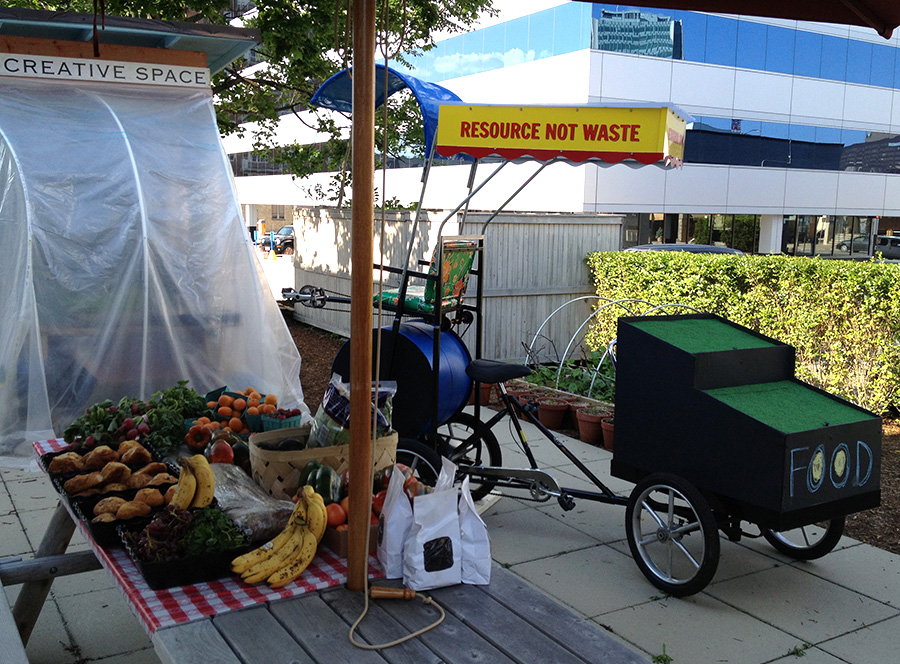
EXCESS at Stamford’s Franklin Street Works
Terri Smith, the director of Franklin Street Works, a not for profit art space in Stamford CT, invited EXCESS NYC to Stamford for the city’s first Art Walk. The food rescue and composting bike was installed at an empty store front in downtown Stamford along with a poster installation that reveals some of the realities underlying EXCESS. And for a one day event on Saturday June 15th, the bike circulated downtown Stamford to collect discarded edible food that was eaten at a picnic in Franklin Street Works’ backyard.
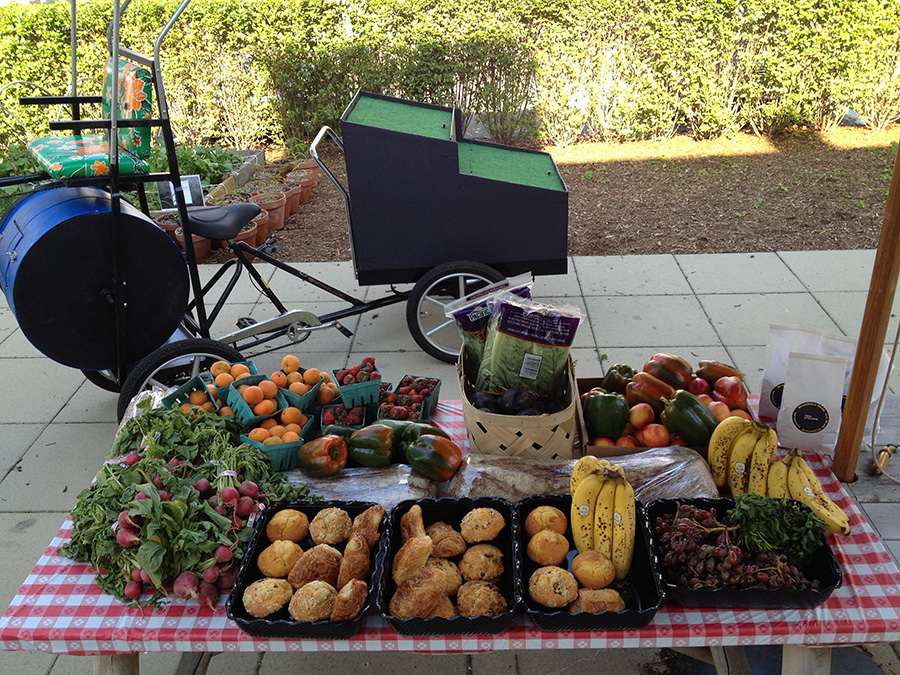
Food contributed by Stamford farmer’s market, Napa & Company and Lorca Cafe
The big food collection occurred as EXCESS happened to ride into the Bedford Street farmer’s market as the vendors were breaking down. We went from vendor to vendor and asked if they had food that they would be throwing away. One vendor invited us to take everything! We got boxes of fruits and vegetables from him, amazing avocados and bell peppers that would not have been good for another day. We made a great avocado spread for the evening. Other fruit and vegetable vendors gave us bags of fruits.
We also collected a small amount of compost. It was all the discarded fruit and seeds that vendors cut up for people to try that were discarded. It appeared that a lot more could have been collected if it wasn’t already packed in trash bags with other garbage.
The few restaurants that had agreed to put food aside for us either forgot or could not contribute. However two businesses entirely came through – Napa and Company at 75 Broad St. Adam the chef is great, understands composting and food waste and was eager to contribute.
Leyla, the owner of Lorca Cafe on Bedford was also entirely on board. Her employees were expecting us with bags of baked goods, a real treat for everyone visiting the gallery. Tomorrow is the final day of the storefront installation.
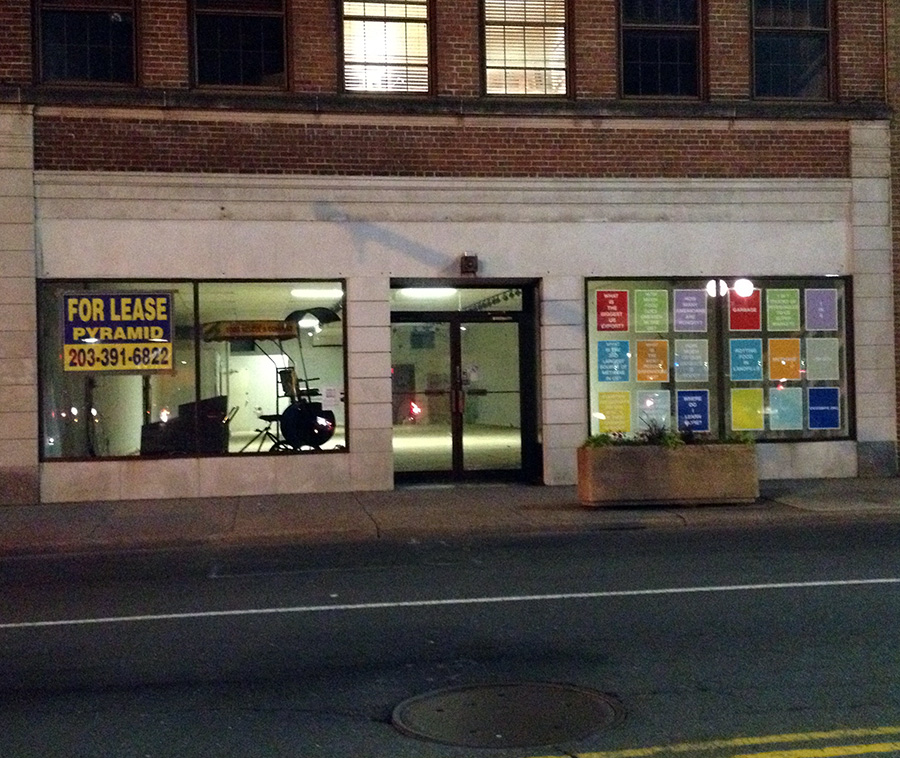
EXCESS NYC downtown Stamford store front installation
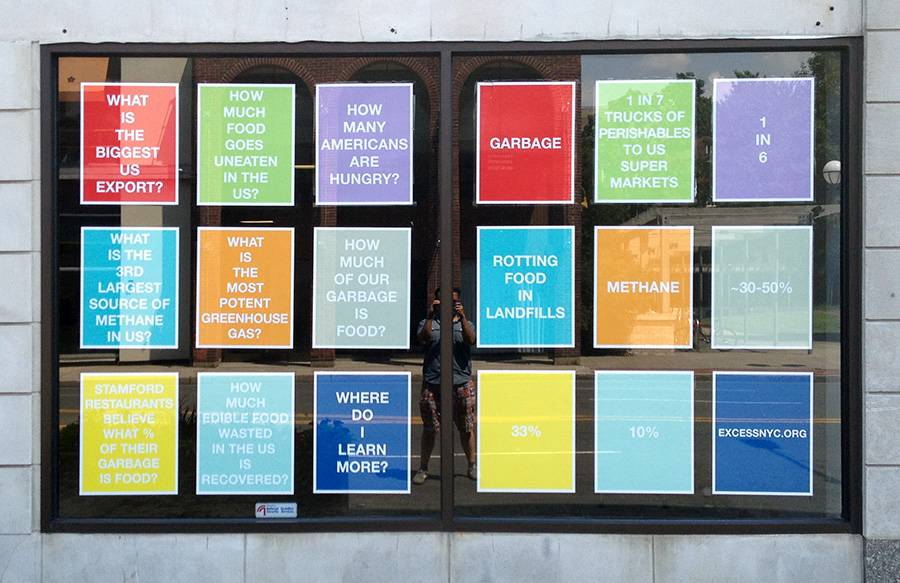
EXCESS poster installation at downtown Stamford storefront
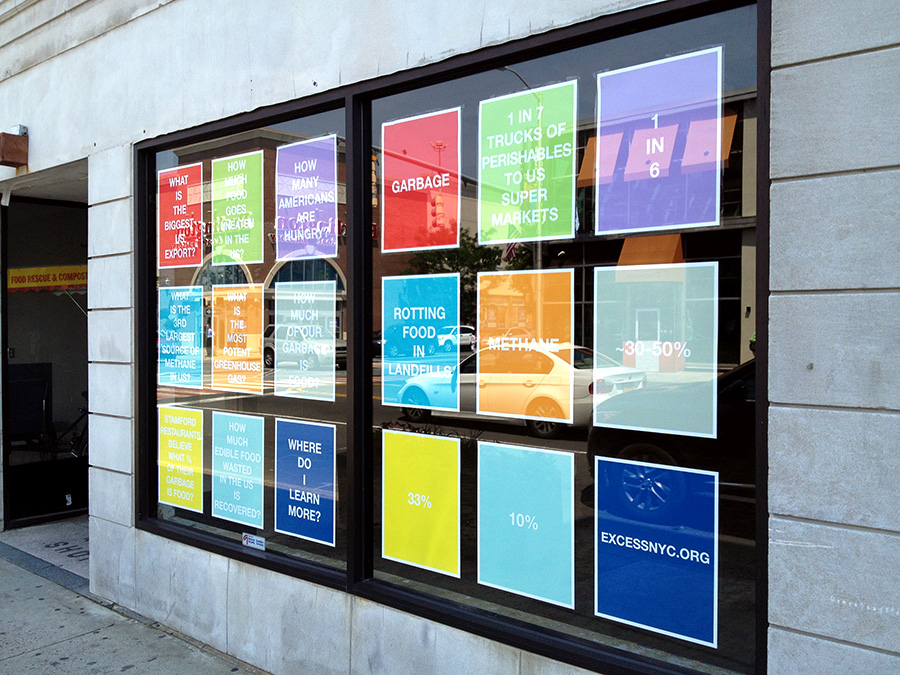
EXCESS poster installation, Stamford CT.
Alex Hubbard at Maccarone
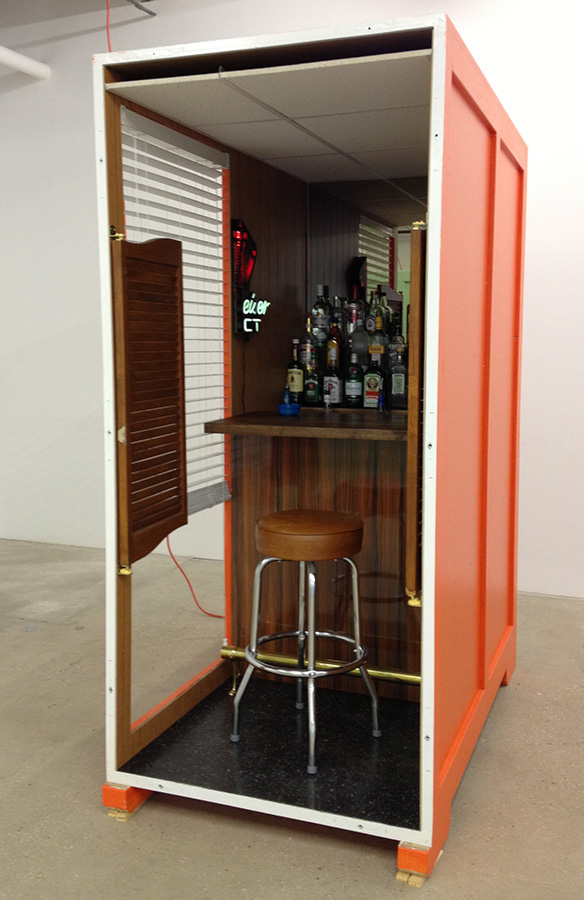
“Montecore’s” 2013, Multi-media assemblage with museum crate, 91.5″ x 69″ x 41″
I saw Alex Hubbard’s exhibition at Maccarone back in May, buy only now in mid-June do I have the time to consider what I saw. Hubbard took advantage of Maccarone’s size and multiple galleries to present two separate sets of work “Magical Ramón” and “The Five Bar Blues.”
I didn’t care for the work making up “Magical Ramón” and I particularly disliked the “bent paintings.” The bent paintings are solid colors of polyurethane hanging off the wall or laying on the ground. I could consider the formal qualities of these things… the colors, shapes and the fact that they are likely work intensive, but I consider them toxic and boring.
“The Five Bar Blues” on the other hand are brilliant! Meticulously constructed sections of life-size dive bars installed into shipping crates! The bars were filled with liquor. I asked the attendant of the sculptures were interactive, she said yes, and the friend I was with dived right into the Hennessy. Besides the brilliance of drinking stations fitted into art crates, each bar can only fit one person and is modeled after dive bars with iconic elements such as the steel black gate and blue neon or alternately the wooden saloon half doors with wood paneling interior and Budweiser sign and both with drop ceilings.
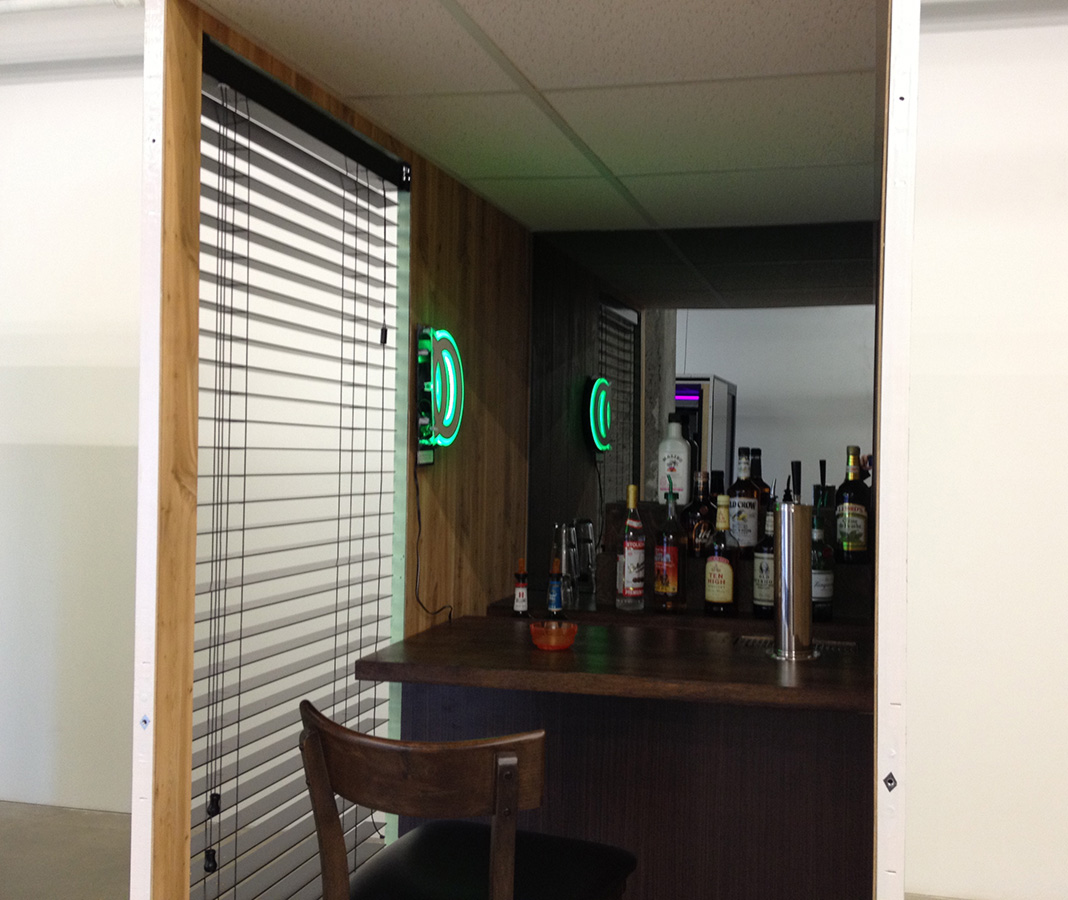
“Siegreid’s” 2013, Multi-media assemblage with museum crate, 91.5″ x 69″ x 41″
The fact that there is only space for one person evokes Hopper’s Nighthawks and a host of other impressions – bars that open at 6am where lonely people might spend the day and afternoon…
Over the years, I’ve known any number of artists who wish they owned a bar or hope to one day open up their own bar, Alex Hubbard has found a great alternative… build a little bar into a crate, stock it with liquor and place it in a gallery!
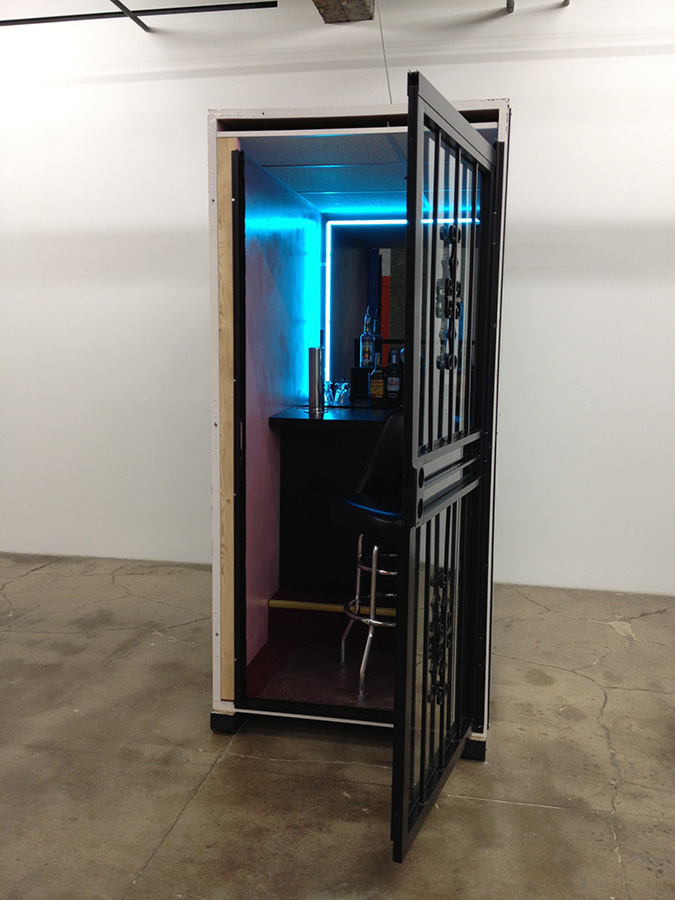
“Latimore’s” 2013, Multi-media assemblage with museum crate, 91.5″ x 69″ x 41″
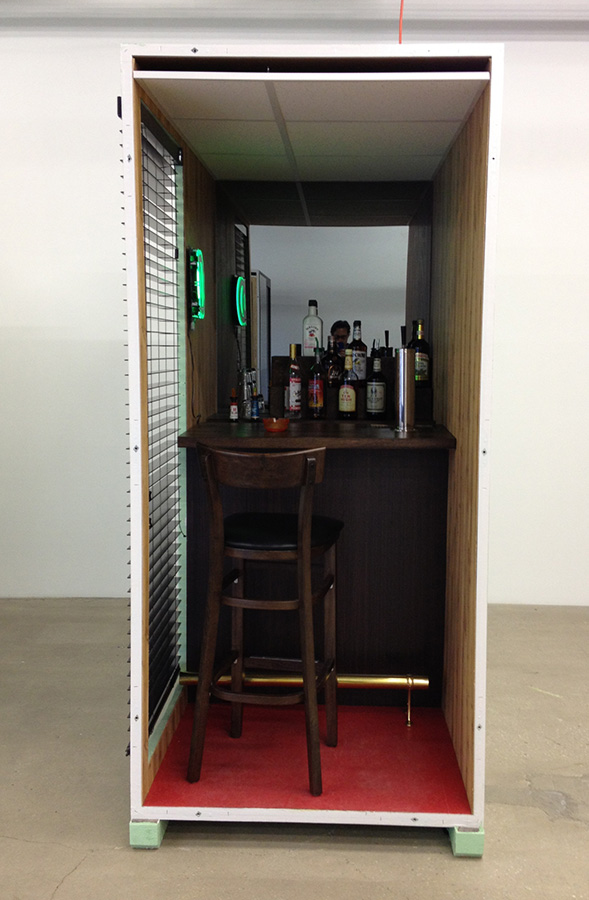
“Siegfrid’s” 2013, Multi-media assemblage with museum crate, 91.5″ x 69″ x 41″
